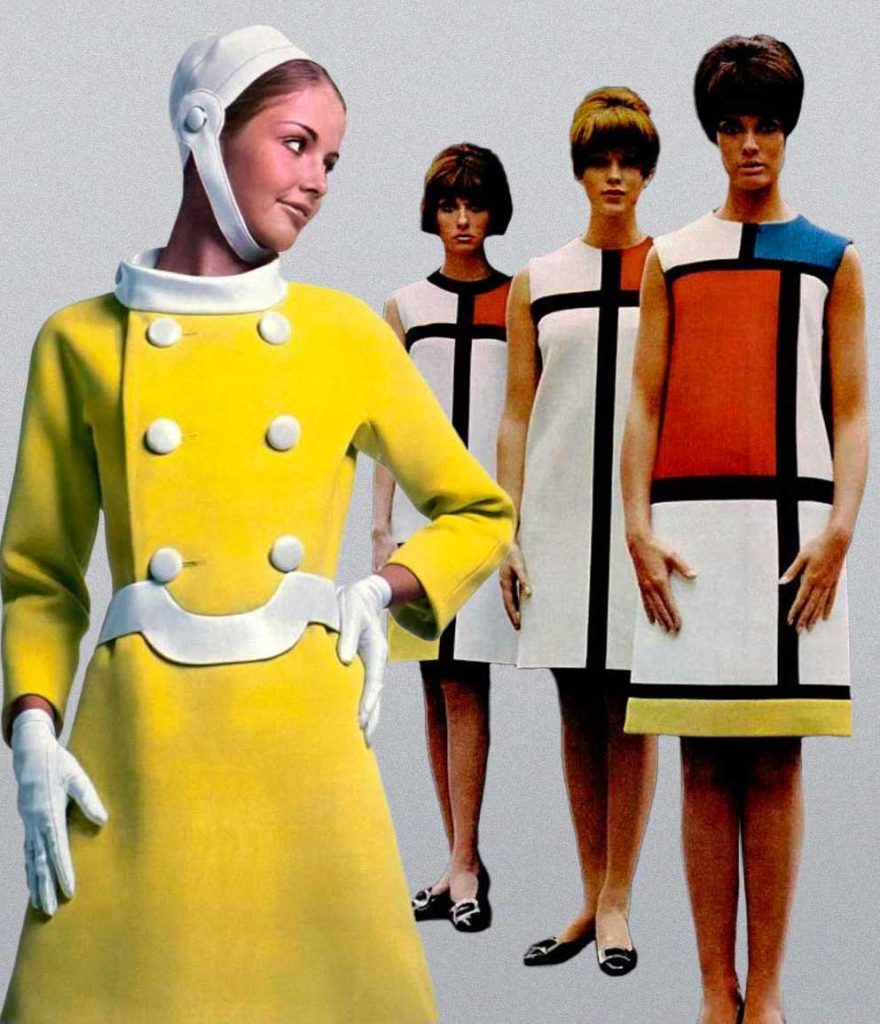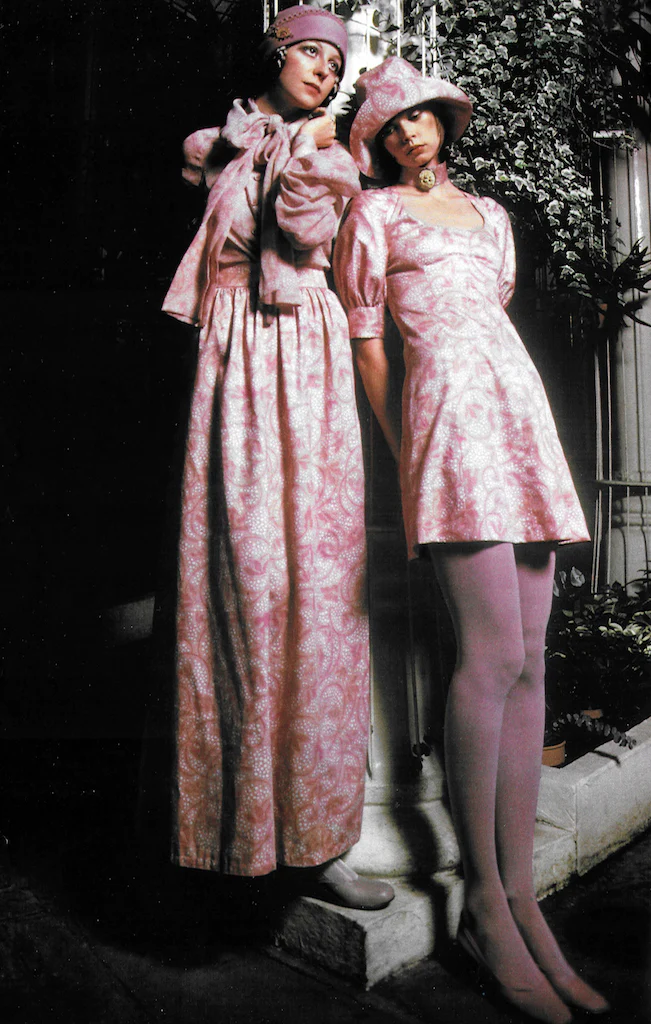Did you know that vintage dress sewing patterns have seen a 40% surge in popularity over the past year? From timeless elegance to unique styles, these patterns offer endless possibilities for creating one-of-a-kind garments. Dive into the world of vintage fashion with us as we explore the charm and creativity of using vintage dress sewing patterns. Discover tips, tricks, and inspiration to unleash your sewing skills and bring a touch of nostalgia to your wardrobe. Join us on this exciting journey back in time to unlock the beauty and craftsmanship of vintage dressmaking.
Key Takeaways
-
Understanding the evolution of dress patterns can provide insight into current fashion trends and inspire creativity in sewing projects.
-
Decade highlights in fashion offer a wealth of inspiration for creating unique vintage looks that resonate with modern style preferences.
-
When selecting a vintage pattern, consider your body shape, style preferences, and sewing skill level to ensure a successful sewing project.
-
Implement cutting and assembling tips such as pattern adjustments and fabric choices to enhance the quality and fit of your vintage dress creation.
-
Explore the versatility of vintage designs by adapting patterns to create both evening and daywear options suitable for various occasions.
-
Vintage coats and jackets present an opportunity to elevate your wardrobe with timeless pieces that showcase intricate details and classic silhouettes.
-
Sewing patterns for special occasions allow you to craft bespoke garments that capture the essence of vintage elegance for memorable events.
Evolution of dress patterns
Transition
As we delve into the evolution of vintage dress patterns, we witness a remarkable shift from the structured Simplicity 1950’s one-piece dress to the more relaxed and effortless 1960’s Jiffy apron sewing pattern. The transition reflects not just changing fashion trends but also alterations in societal norms and behaviour.
Style Evolution
Exploring the journey of vintage Butterick patterns from the 1950s to the 1970s unveils a fascinating narrative of style evolution. In the 1950s, these patterns exuded elegance and sophistication with tailored silhouettes, while by the 1970s, they embraced a more free-spirited and bohemian aesthetic. This transformation encapsulates the dynamic nature of fashion over two decades.
Complexity Shift
The consent complexity of sewing patterns experienced a notable shift from the 1950s to the 1960s. Simplicity patterns in the 1950s often featured intricate details and multiple pieces, requiring meticulous attention to detail. However, as we moved into the 1960s, both Simplicity and Butterick patterns adopted a more streamlined approach with simpler designs that catered to the changing preferences of seamstresses.
Decade highlights in fashion
1960s
The 1960s marked a shift towards bold and experimental fashion. Mini skirts, bold prints, and vibrant colours dominated the scene. Vintage Simplicity patterns reflected this era with modern silhouettes and innovative designs.
1950s vs. 1970s
Comparing the 1950s to the 1970s, we see contrasting styles. The 1950s exuded elegance with full skirts and cinched waists, evident in vintage Butterick wrap dress patterns. On the other hand, the 1970s embraced boldness with flowing lines and eclectic prints seen in tunic patterns.
Influence on Vintage Dress Patterns
Each decade left a distinctive mark on vintage dress sewing patterns. The refined aesthetics of the 1950s influenced timeless designs that are still popular today. In contrast, the daring spirit of the 1970s inspired more adventurous and free-spirited patterns.
Selecting the right vintage pattern
Choosing between Simplicity 1960’s Beach Cover-Up and Robe Sewing Pattern or Jiffy Reversible Coat Sewing Pattern
When deciding between the Simplicity 1960’s beach cover-up and robe sewing pattern or the Jiffy reversible coat sewing pattern, we should consider the occasion and fabric choice. The beach cover-up exudes a casual vibe, ideal for summer days, while the reversible coat offers versatility for different seasons.
Factors to consider when selecting a Butterick 1970’s Misses’ Dress, Tunic and Pants Sewing Pattern
For different body types, we must pay attention to the sizing measurements provided on the vintage Butterick 1970’s Misses’ Dress, Tunic and Pants sewing pattern. It’s crucial to select a pattern that complements our body shape to ensure a flattering fit.
Matching sewing skill level with the complexity of vintage dress patterns
To ensure a successful sewing project, we need to align our sewing skill level with the complexity of vintage dress patterns. Beginners may find Simplicity patterns more straightforward, while experienced sewers might enjoy the intricate details in Butterick’s designs.
Cutting and assembling tips
Fabric Handling
When working with delicate fabrics for vintage sewing patterns, we recommend handling them with care to avoid tears or snags. Start by pre-washing the fabric to prevent shrinkage after sewing.
Pattern Pieces Placement
Proper pattern placement is crucial when cutting out pieces for vintage coats and jackets. Ensure that you align the grainline of the pattern with the fabric’s grain to maintain the garment’s structure.
Expert Tips for Vintage Patterns
For Simplicity 1960’s Jiffy dress, with three main pattern pieces, begin by laying out the fabric on a flat surface. Pin the pattern pieces securely before cutting along the designated lines.
Working with Delicate Fabrics
When dealing with vintage Butterick 1950’s quick sewing patterns, especially for advanced beginners, use sharp scissors to cut accurately. Take your time to ensure precision in cutting each piece.
Importance of Grainline
Understanding the grainline is essential, especially for beginners, as it determines how the fabric drapes on the body. Aligning pattern pieces correctly ensures a professional-looking finish.
Versatility of vintage designs
Simplicity
Vintage Simplicity 1960’s Jiffy dress patterns offer a timeless style suitable for both casual and formal occasions. The simplicity and elegance of these designs make them a versatile choice for various events. With minimal effort, we can create an outfit that exudes classic charm.
Butterick
The Butterick Wrap-and-Go skirt sewing pattern allows for endless styling possibilities, offering a simple yet chic look that can be adapted to different fashion preferences. Whether paired with a casual top for a day out or dressed up with elegant accessories for an evening event, this vintage design adds a touch of sophistication to any ensemble.
Timeless Appeal
The vintage Simplicity 1950’s coat sewing pattern showcases a timeless appeal that transcends generations. Its classic silhouette and structured design can be easily customised to suit modern fashion trends, making it a versatile piece in any wardrobe. By incorporating contemporary fabrics and colours, we can effortlessly update this vintage coat pattern to reflect current styles while maintaining its retro charm.
Evening and day wear options
Vintage Simplicity 1960’s Evening Dress Pattern
We adore the elegance of the vintage Simplicity 1960’s evening dress sewing pattern. The intricate design and flattering silhouette make it perfect for special occasions.
Vintage Butterick 1970’s Wrap Dress vs. Simplicity 1950’s Dress
Comparing the comfort and style of the vintage Butterick 1970’s wrap dress with the sophistication of a vintage Simplicity 1950’s dress is fascinating. Each exudes its unique charm.
Accessorising Vintage Day Wear Patterns
When it comes to creating a complete retro look, accessorising vintage daywear patterns is key. Adding statement jewellery, hats, or handbags can elevate your outfit to another level.
Vintage coats and jackets
Construction Techniques
When sewing the vintage Simplicity 1950’s skirt and jacket patterns, we must master techniques like attaching a back zipper and sewing on buttons for a polished finish. These patterns often feature short sleeves and elegant collar options.
Classic Design Elements
The vintage Simplicity 1960’s Jiffy reversible coat pattern is renowned for its timeless design elements. With raglan sleeves and a collarless neckline, this coat exudes effortless style and versatility. The inclusion of pockets adds both functionality and flair to the garment.
Fabric Selection Tips
To achieve the desired look when crafting the vintage Butterick 1950’s coat pattern, we should opt for fabrics that complement the design. Fabrics like wool blends or tweed work well for this pattern, ensuring a structured yet stylish outcome. Choosing a lining fabric that complements the outer fabric is crucial for a professional finish.
Sewing patterns for special occasions
Vintage Simplicity 1960’s Jiffy Dress Sewing Pattern
The Simplicity 1960’s Jiffy dress sewing pattern exudes timeless elegance, perfect for weddings and parties. Its round neckline and side seams offer a classic silhouette that never goes out of style. The simplicity of this pattern allows for easy customization to suit various special occasions.
Vintage Butterick 1970’s Misses’ Dress, Tunic and Pants Sewing Pattern
The Butterick 1970’s Misses’ Dress, Tunic and Pants sewing pattern embodies sophistication, ideal for formal events. With its detailed piece dress sewing pattern and precise seams, this design offers versatility for different special occasions. The intricate details of this vintage pattern elevate any outfit for a refined look.
Customising Vintage Dress Patterns
When it comes to customising vintage dress patterns for special occasions, we recommend adding personal touches like unique fabric choices or embellishments. By incorporating modern elements while staying true to the vintage design, you can create a one-of-a-kind garment that reflects your style and personality.
Summary
We’ve explored the evolution of dress patterns, highlighted fashion trends across decades, and delved into selecting, cutting, and assembling vintage patterns. The versatility of vintage designs for both day wear and special occasions, including coats and jackets, has showcased the timeless appeal of these styles. As we navigate the world of vintage sewing patterns, we’re inspired by the creativity and elegance they offer, allowing us to express our unique style with a touch of nostalgia.
Let’s continue our journey through the realm of vintage dress patterns, experimenting with different styles and eras to create garments that reflect our individuality. Keep exploring new techniques, fabrics, and designs to elevate your sewing skills and craft one-of-a-kind pieces that stand out in today’s fast-paced fashion world.
Frequently Asked Questions
How can I determine the right vintage dress sewing pattern for my body type?
To choose the ideal vintage dress pattern, consider your body shape and proportions. Look for patterns that accentuate your best features while providing comfort and ease of movement.
What are some essential cutting and assembling tips for sewing vintage dress patterns?
Ensure to carefully follow the pattern instructions, pre-wash your fabric to prevent shrinkage, use sharp scissors for precise cutting, match pattern pieces accurately, and press seams neatly for a professional finish.
Are vintage designs versatile enough to be worn for both evening and day occasions?
Vintage dress patterns offer versatility with various design options suitable for different events. You can easily adapt a vintage design by choosing appropriate fabrics and accessories to transition from day to evening wear effortlessly.
How do I select a vintage coat or jacket sewing pattern that aligns with current fashion trends?
When choosing a vintage coat or jacket pattern, look for timeless styles that complement modern trends. Opt for classic silhouettes like trench coats or tailored jackets that never go out of style.
Can I find sewing patterns for special occasions in the realm of vintage designs?
Yes, vintage sewing patterns often include elegant designs perfect for special events such as weddings, parties, or formal gatherings. Explore patterns featuring intricate details like lace overlays, embellishments, and flattering silhouettes for a standout look.


